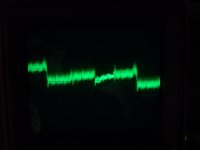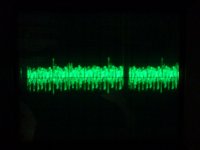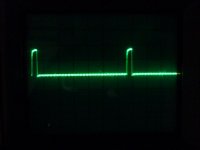Chuck(G)
25k Member
The boards burned up traces because the caps were bad. Shorted capacitors (electrolytic and tantalum) are par for the course on old gear. Unfortunately, that shorted cap, before it goes kablooie, will sometimes take a trace or two, if the trace is thin enough. It happens and there's nothing you can do about it, short of putting a fuse on each board.
Okay, so the CPU is doing something. The issue we should find out is if the SIO chip is being addressed. If the CPU is polling and waiting for a return, it'll have to access the chip to see if there's any data present. I don't have the Teletek schematic in front of me, but no matter.
Pin 35 of the SIO (or DART) chip is the chip enable--you should see this pulsing. You should see a steady waveform on pins 13 and 14 (receive and transmit clocks for the "A" side). This will at least tell you that the PROM program is setting things up.
Okay, so the CPU is doing something. The issue we should find out is if the SIO chip is being addressed. If the CPU is polling and waiting for a return, it'll have to access the chip to see if there's any data present. I don't have the Teletek schematic in front of me, but no matter.
Pin 35 of the SIO (or DART) chip is the chip enable--you should see this pulsing. You should see a steady waveform on pins 13 and 14 (receive and transmit clocks for the "A" side). This will at least tell you that the PROM program is setting things up.



